So many sharks live in Australia that it is hard to keep them separated when identifying various species.
There are the largest sharks on the planet like the great white shark down to the scalloped hammerhead and the spotted wobbegong.
See how many different types of sharks you might see when swimming in Australia.
Speaking of swimming, is that even allowed on the land down under?
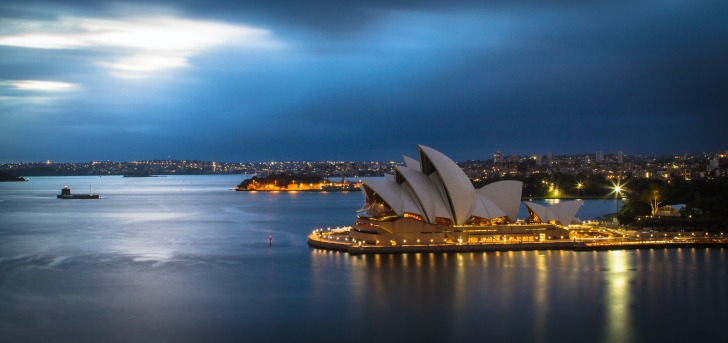
Contents
So… Are There Sharks in Australia?
Yes, there are sharks in Australia.
This is a nation consisting of a single landmass.
Around the island of Australia are ocean waters that are home to dozens of native species of sharks.
These shark species range from small sharks that are harmless to humans, all the way to the most predatory of all sharks–the great white.
The waters in Australia include saltwater around the island and estuaries along with moors and rivers of tributaries that drive the water inland.
From here, the water is no longer pure saltwater, which is what most sharks require to survive, along with space to swim and hunt.
The shallow waters of these areas are freshwater as they enter the groundwater channels of the earth.
Ocean water remains salty because, over millions of years, salty water has evaporated into the seas.
Freshwater, as explained by Brittanica, is rainwater filtered through various mediums, mainly soil that leaches out salt and other minerals from the water.
It is a natural process, as the earth has done for as long as humans have existed.
Sharks live and breed according to the different types of water in Australia, including freshwater in rivers, streams, lakes, and estuaries.
Saltwater surrounds the island and inhabits the majority of sharks.
However, some sharks do thrive in freshwater habitats.
The sharks that live around Australia include mako sharks, white sharks like great whites, and whale sharks.
You can also find basking sharks and porbeagles, which are both saltwater shark species.
Sharks that are swimming in the freshwater currents of Australia are bull sharks, sand river sharks, and tiger sharks.
The Australian Government reported, “Worldwide, there are about 400 species of sharks.
Of these, around 180 species occur in Australian waters, of which about 70 are thought to be endemic.”
Endemic sharks are those that are native to an area and only found there.
One hundred and eighty sharks comprise nearly half of the world’s shark population–and these live somewhere in Australia.
These include:
- Grey nurse sharks
- Speartoothed sharks
- Northern river sharks
- Whale sharks
- White sharks
- Freshwater sawfish
- Scalloped hammerhead sharks
- Oceanic whitetip sharks
- Porbeagle sharks
- Thresher sharks
The white shark species include great white sharks, which are just larger than the regular-sized white shark.
These sharks both have the same body and structure.
Additionally, many sharks, like hammerheads, have several different species that inhabit Australia.
Therefore, you can presume that if a shark, such as the northern river shark, has one species, there may be others, such as the Byzant river shark, also found in Australia.
Also, some of the species, such as wobbegong, have names that are from the country.
These species, like the wobbegong sharks, have 10 types, including the ornate wobbegong, which is native to Australia.
Is it Safe to Swim in Australia?
Most of the beaches in Australia are safe to swim in.
However, you want to avoid the world’s most dangerous beach, which is also on the island.
This is Fraser Island in Queensland.
Young great white sharks frequent Fraser Island–and there are wild dingos afoot.
These dogs are wild and run-free and are also territorial and aggressive. Snarling, biting dingos can quickly run a beach picnic.
There is also a lack of lifeguards on duty, and no rescue operator or hospital on the island.
Therefore, if you are attacked by a shark on Fraser Island, chances are slim that you will make it off the island alive.
If you do swim in Australia, look out for the Surf Life Savers.
This is the Aussie version of the US Coast Guard, and they are trained to help save lives in the ocean.
Swimming with these individuals on patrol will increase your safety.
Also, be aware of signs and flags indicating that the waters are unsafe for swimming.
Oftentimes, when there are rough, choppy waters, this is a sign that fish are being churned up–and followed by predators, including sharks.
These predatory fish are able to hunt without being seen when the waters are choppier near the surface.
Other predators to be cautious of in the tides of Australia include jellyfish, man-o-war, sting rays, and other shallow-water creatures.
The coral reefs of Australia are home to a number of these smaller, less visible marine animals.
Be cautious when walking on the sands or in the surf of Australian beaches as these forms of life are often hiding and waiting to be provoked.
Interesting Shark Facts in Australia
In Australia, there are often shark attacks.
In fact, in 2016, 26 people reported being attacked by a shark.
Of those attacks, two of the people died due to a shark attack.
That same year, for comparison, there were 53 global shark attacks and zero fatal shark attacks in the US.
Therefore, Australia has a greater-than-normal percentage of shark attacks on average compared to the rest of the world.
That’s saying a lot!
Yet when more than half of the people attacked by humans come from one single island nation, you could say that island–Australia–is most likely to be shark infested.
“The odds of being killed by a shark in Australia are one in 8 million. It’s the same likelihood of being killed by a kangaroo – even though kangaroos don’t evoke the same fear in us, the danger is there, but it’s minuscule,” said Nature Australia.
According to the Australian Government, there is a species of shark in Australia called Port Jackson with some interesting eggs.
Sharks lay eggs when having babies, and the Port Jackson shark eggs are shaped in a spiral.
Hard to believe, these eggs are actually shaped like spiraling corkscrews made out of seaweed.
The material resembles giant grenade-like balls that are formed this way by the sharks for one reason.
Sharks do this so they can launch their eggs into the sand and protect them.
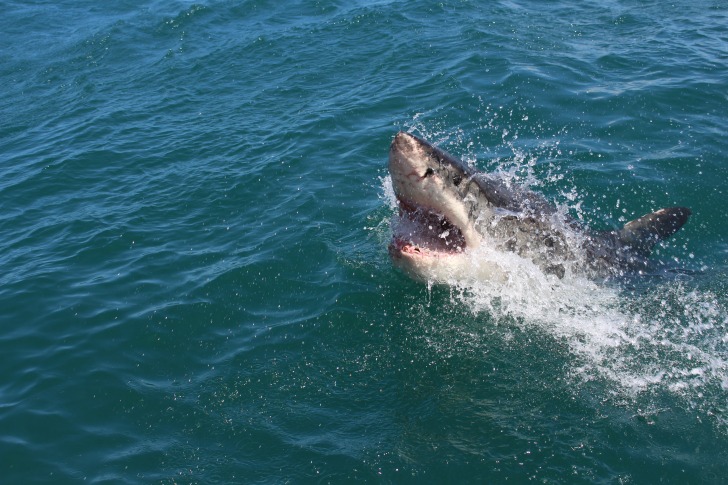
Sharks live in either cold, warm, or temperate waters, depending on the type of species.
Warm-blooded sharks need temperate waters found in warmer seas of tropical locales.
Cold-blooded sharks live in colder waters, including the Arctic circle.
Here you see Greenland sleeper sharks and the black dogfish shark.
Larger sharks like the great white are cold-blooded sharks that need the water temperature to be the same as their internal temperature.
The perfect temperature for a great white shark is between 54 and 75 degrees Fahrenheit.
White sharks, in general, have a body temperature of 80 degrees F.
However, their stomach temperature can be as low as 57 degrees and the fish will still live and swim.
“Most sharks, like most fishes, are cold blooded, or ectothermic.
Their body temperatures match the temperature of the water around them.
There are, however, five species of sharks that have some warm-blooded, or endothermic capabilities,” according to the Florida Museum.
The water temperatures around Australia are perfect for great white sharks, as well as many other smaller species of cold-blooded sharks.
The temperature of the water is warmest in February when it is around 75 degrees F.
By September, the temperature of Australia’s tropical waters is at its lowest, hovering around 65 degrees F.
Therefore, the water rarely gets too cold for cold-blooded sharks to live in Australia.
3 Safety Tips for Swimming in Shark-infested Waters
- Avoid swimming at beaches where there are no lifeguards, like Surf Life Savers, which is the primary water rescue in Australia. They conduct aerial shark and beach patrols to monitor the activity of sharks.
- Leave your expensive rings, bracelets, and earrings safely where you can not lose them–back at home. If you swim wearing jewelry, the reflection from the metal will look like the scales of fish. Do you want to be mistaken for a school of fish by a hungry shark? Not a chance!
- Stay away from the mouths of rivers and lagoons opening near the sea. Sharks that are predominantly saltwater species can accidentally get caught in these after a heavy rain shower or flooding. They are more likely to be starving and irrational, and ready to attack anyone they see.
Summary
As an island nation in the Southern Hemisphere, Australia is far geographically from the US.
However, we speak the same language–English–as the folks Down Under.
Yet, in terms of sharks and shark attacks, there are far more of these sea predators in Australia than we see on the coast of any other country.
This could be due to the vast amount of sea life that inhabits the coral reefs surrounding the island.
It also has to do with the temperature of the water and the close proximity to the South Pole, which is home to Antarctica and its unique sea life.
Staying away from sharks while swimming in Australia is essential to survival.
And stay away from Fraser Island if you want to have the best luck at not getting attacked by a great white.
Australia Safety Overview
READ THE FULL REPORT: Australia Safety Review
Safety Index:
- OVERALL RISK: LOW
- TRANSPORT & TAXIS RISK: LOW
- PICKPOCKETS RISK: LOW
- NATURAL DISASTERS RISK: MEDIUM
- MUGGING RISK: LOW
- TERRORISM RISK: LOW
- SCAMS RISK: LOW
- WOMEN TRAVELERS RISK: LOW
Frequently Asked Questions
How many people in Australia have been eaten by sharks?
According to the Culture Trip, in Australia, 37 humans in recorded history have been killed and bitten at least by sharks.
The sharks in Australia are aggressive because they are natural predators.
They are also seen to be the most dangerous and threatening to humans due to the large size of many species of saltwater sharks around the coast.
Because of sharks, surfing and swimming in the ocean around Australia, which is vast–the Indian, Pacific, and Southern Oceans, plus the Coral, Tasman, and Timor Seas, are dangerous, too.
This is due to the high concentration of sharks that live in these waters, especially in other waterways in the world.
Humans who are visiting Australia might not be aware of the number of types of sharks swimming here and should be extra cautious.
Are Australians afraid of sharks?
Yes, actually.
According to a recent online survey, sharks scare more than 70 percent of people living in Australia
Is deep sea diving allowed in Australia?
“All levels of divers are welcome in “the land down under”, as it has over dozens of dive sites, very accessible shore dives, and over 25,000 kilometers (15535 miles) of coastline.
You will be amazed as you explore The Great Barrier Reef and encounter many different and colorful fish species,” stated Scuba Schools International regarding Australia.
That being said, be advised there are also sharks in those waters.
So you will be deep sea diving, hopefully safely, but in shark-infested waters.
If you have a shark allergy, please be advised.
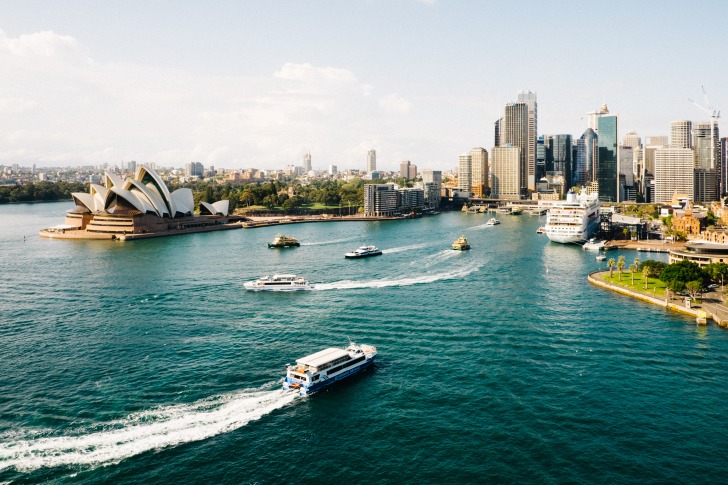

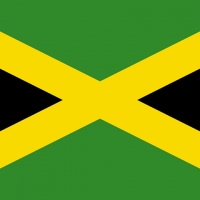
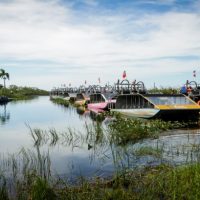








Swimming in Australia can be safe if you follow the safety tips and always swim with a lifeguard present.
Australia is home to a diverse range of shark species, including the largest and most predatory sharks like great whites down to smaller harmless ones, making it an exciting place for swimming but also requiring caution.